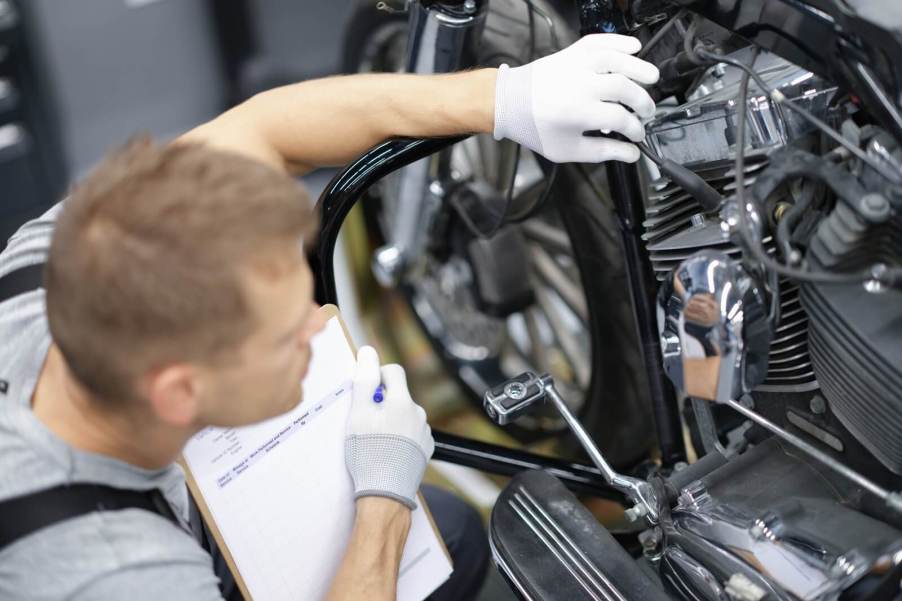
Every Rider Should Be Using This MSF Pre-Ride Motorcycle Safety Rule
Riding a motorcycle is inherently dangerous. As a motorcycle rider, you swap all of the modern safety features of a car for a visceral, almost natural connection to the road. However, there are things that riders can do to stay as safe as possible. Beyond opting for a DOT and Snell-certified full-face helmet, riders should use the Motorcycle Safety Foundation (MSF) T-CLOCS pre-ride safety rule.
The MSF T-CLOCS pre-ride checklist is a must-use safety rule for riders looking to cut down on dangerous mishaps
“T-CLOCS.” It sounds like a mnemonic device a student would use to memorize something before attempting a nerve-racking chemistry test or poli sci final. However, it’s actually a vital tool that the Motorcycle Safety Foundation (MSF) teaches students to make sure their bikes are ready for the rigors of the road.
Before you hop on your hog and head out on the road, you should make sure your motorcycle is road-worthy from top-to-bottom. That’s where T-CLOCS comes in. Here’s what the motorcycle safety acronym means:
| T | Tires, wheels, and brakes |
| C | Controls (handlebars, levers, pedal, cables, hoses, and throttle) |
| L | Lights and electrics (battery, lights, switches, mirrors, reflectors, wiring) |
| O | Oil and fluids |
| C | Chassis (frame, suspension, chain/belt, fasteners) |
| S | Stands |
For starters, riders should inspect their tires, wheels, and brakes. Check your cold tire pressure. Look for sufficient tread depth or visible damage, and check for brake function. Next, check your controls. Not just your throttle and levers, but also your pedals, hoses, and cables.
Furthermore, riders should note the condition and functionality of lights and electrics. Don’t neglect your battery, switch gear, visible wiring, signals, and horn. After all, a big part of motorcycle safety is visibility.
It might seem obvious, but your oil and fluids are vital to keep your engine and mechanical components lubricated and sufficiently cool. Check levels, keep up with maintenance, and look out for leaks.
Finally, ensure your chassis and stands are intact, undamaged, and maintained. Whether you have a chain or belt, don’t let it wear prematurely. Check operation, sufficient tightness, fork travel, and the status of your side or center stand.
Unsurprisingly, the MSF teaches T-CLOCS as one of the very first portions of Basic RiderCourse (BRC). In BRC, students of any experience level can get solid, instructor-driven motorcycle education beginning with classroom instruction and ending with practical skills on a course. And T-CLOCS is one of the very first skills students learn.



